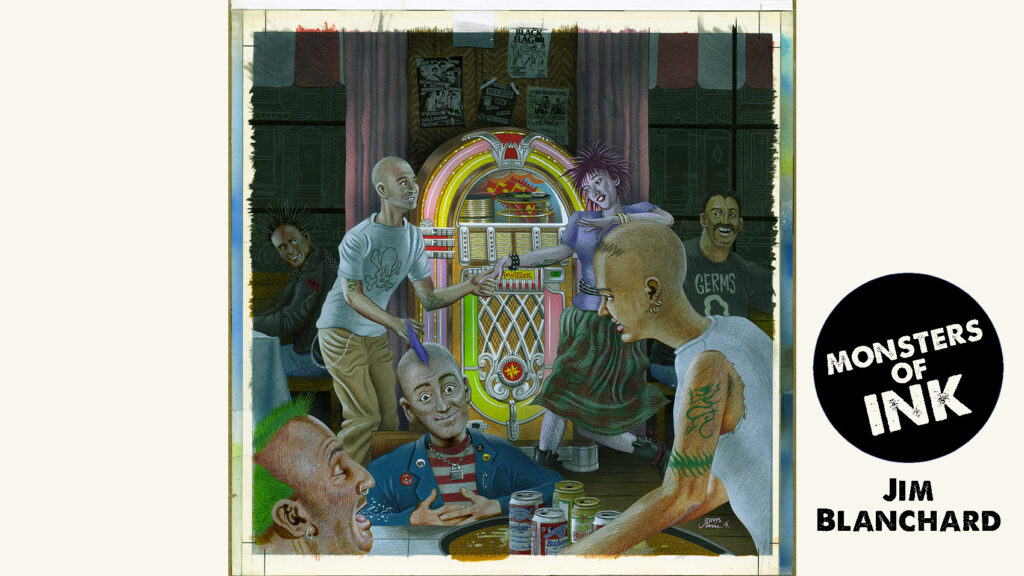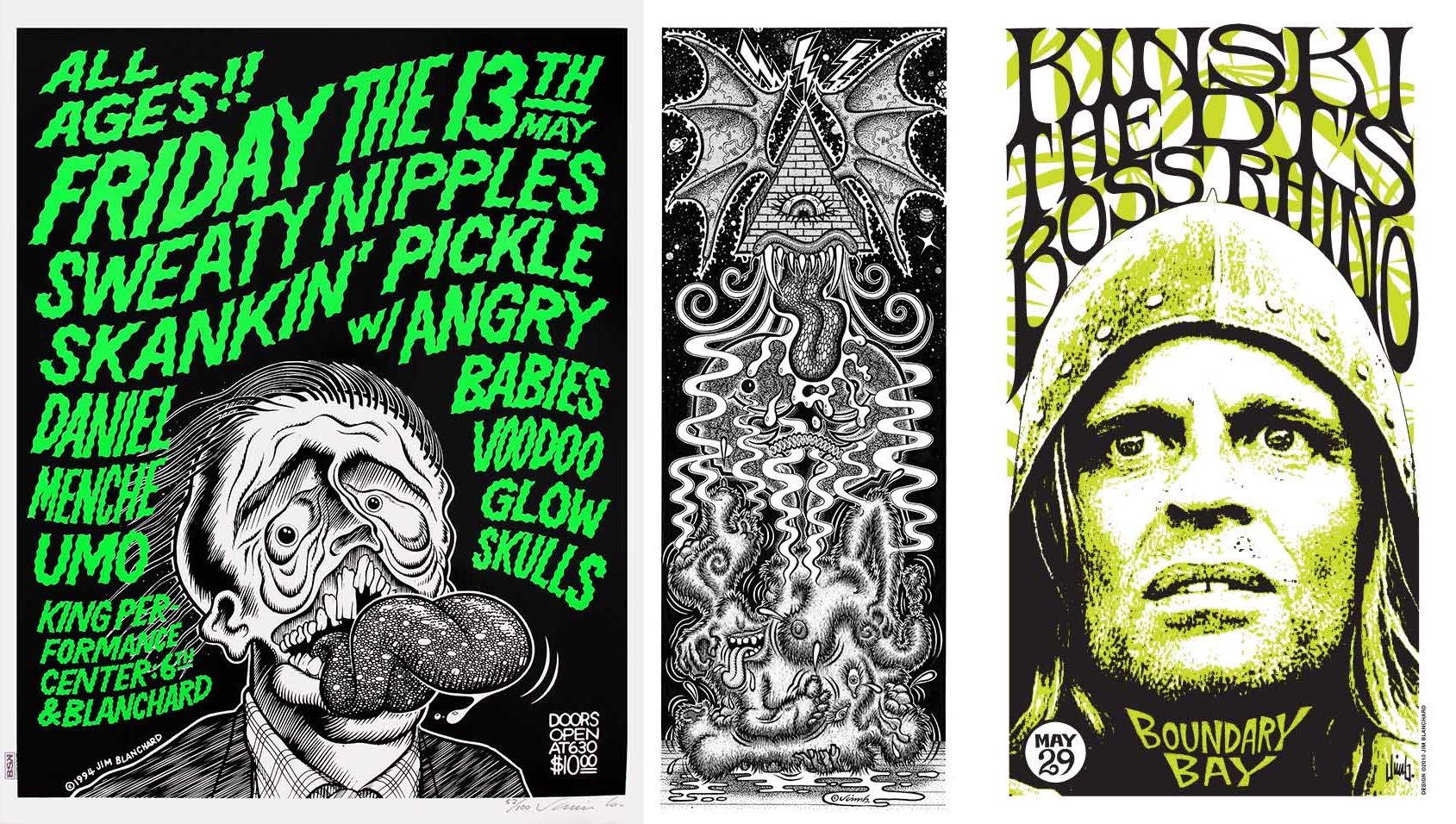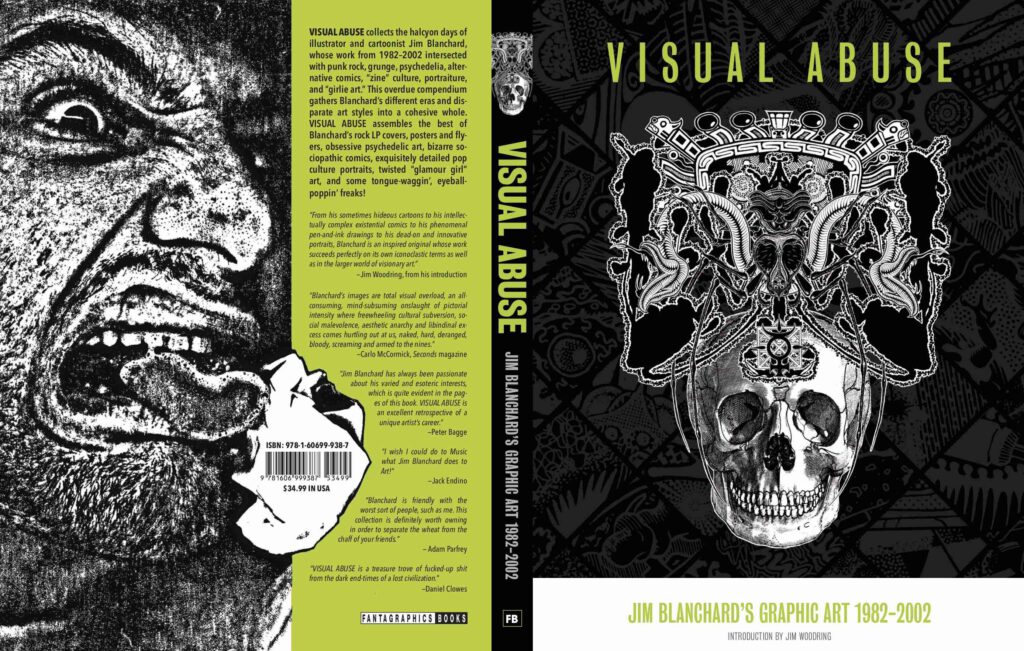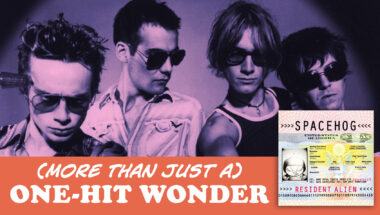Monsters of Ink is a new series where we talk to some of the artists and designers, both legends and legends-to-be, whose contributions define the visual language of modern music. Without these tireless screenprinters, typographers, and obsessive stipplers, our archetypal image of rock & roll would probably just be a bunch of dweebs with guitars and flannel shirts, and records would just be indistinguishable pieces of plastic. These hunched-over heroes lend unforgettable visual compliments to the music in the form of posters, album covers, t-shirts, and who knows what else, and usually for a fraction of what Kanye West has made since you started reading this paragraph. We at Riot Fest can’t make them that much richer, but if we can make them just a tiny fraction more famous, well, at least it’s something.
JIM BLANCHARD…
started publishing the zine Blatch — the first outlet for his detailed, often grotesque drawings — in Oklahoma in 1982, after catching the the punk rock bug. His rep from that publication made him a go-to flier guy when bands like Black Flag, Scream, and Scratch Acid came through town. 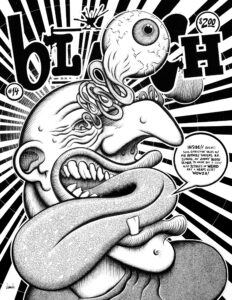 Moving from Oklahoma to Seattle in 1987, Blanchard’s work (not to mention his stint working at “the cool Kinko’s” — a seemingly nationwide phenomenon which anyone who made zines in the 1980s-90s will remember — in the University district with members of Mudhoney and Tad) allowed him to ingratiate himself with the city’s then-exploding music and comics scenes. Before long, he found himself doing fliers for local losers-turned-legends like Nirvana, the Melvins, and Skin Yard, inking about half the issues of Peter Bagge’s beloved comic series Hate, and ultimately having several books of his illustrations published by Fantagraphics Books.
Moving from Oklahoma to Seattle in 1987, Blanchard’s work (not to mention his stint working at “the cool Kinko’s” — a seemingly nationwide phenomenon which anyone who made zines in the 1980s-90s will remember — in the University district with members of Mudhoney and Tad) allowed him to ingratiate himself with the city’s then-exploding music and comics scenes. Before long, he found himself doing fliers for local losers-turned-legends like Nirvana, the Melvins, and Skin Yard, inking about half the issues of Peter Bagge’s beloved comic series Hate, and ultimately having several books of his illustrations published by Fantagraphics Books.
WHICH CAME FIRST: ART OR ROCK ‘n’ ROLL?
Jim Blanchard: I imagine cavemen were smearing their shit on cave walls about the same time they were grunting rhythmically and banging sticks together…
DO THE WORK
I like to push myself, and I’m never satisfied with hacked-out, half-assed artwork. One thing I learned from punk rock was, as much as possible, don’t make it about the money (not that there was much money to be had for art back then); do it to satisfy yourself. If I’m on a deadline, then the art has to be done at a certain time and there’s no choice about spending too much time on it, but I find with the detailed/stippled portrait stuff, that the extra time put into it pays off in the long run, because I can consequently sell the original art for a decent price and also make prints that will sell!
FOR THE LOVE OF TRASH
My art is definitely a byproduct of the cultural obsessions/influences of my youth: MAD magazine, Marvel comics, underground comics, surrealism, psychedelic posters, Topps Wacky Packages, 60s/70s rock graphics, punk rock graphics, etc. I never made a distinction between high and low art. To me, it was all from the same stream (“all meat on the same bone,” to quote Eric Burdon). However, the stuff that really grabbed me would probably be considered trash culture by most. That’s where the action is!
CAREER SUICIDE
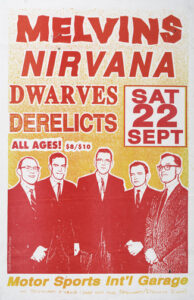 I regret not making an effort to attach my art to the grunge phenomenon more than I did. Despite being in Seattle before it blew up, my generation was the hardcore punk era that preceded it, so I tended to dismiss grunge. I had no idea Nirvana would become the biggest band in the world (or that Hüsker Dü, Black Flag, etc. would become so lionized). I was offered a stack of my posters for the legendary Nirvana show at the Motor Sports Garage with the Melvins on the night of the show, but I turned them down. They’re now worth hundreds of bucks apiece! I did one flyer where Nirvana were the third band on the bill.
I regret not making an effort to attach my art to the grunge phenomenon more than I did. Despite being in Seattle before it blew up, my generation was the hardcore punk era that preceded it, so I tended to dismiss grunge. I had no idea Nirvana would become the biggest band in the world (or that Hüsker Dü, Black Flag, etc. would become so lionized). I was offered a stack of my posters for the legendary Nirvana show at the Motor Sports Garage with the Melvins on the night of the show, but I turned them down. They’re now worth hundreds of bucks apiece! I did one flyer where Nirvana were the third band on the bill.
WHY SO FUCKED UP?
I wouldn’t want to be a young underground artist nowadays. People are way too sensitive, and seem geared to be offended. Before the internet, it was possible to exist under the radar and get away with quite a lot, content-wise. My biggest art heroes growing up were the Zap and underground comix artists: Robert Crumb, S. Clay Wilson, Robert Williams, Greg Irons, etc. Those guys produced some of the most shocking and foul graphics ever committed to paper; stuff that would certainly get you in trouble in today’s uptight, politically correct era. I was essentially imitating them, and figured my art wouldn’t measure up unless it was on a shocking par with them.
WHERE ARE YOU NOW?
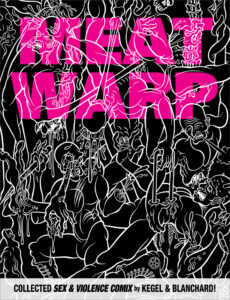 Speaking of shocking content, I’m currently working on a book called Meat Warp, which will collect my collaborations with artist Chris Kegel from 1984-1997. It’s 100 pages of incredibly twisted, stupid, violent, and sexually explicit comic art. I think Fantagraphics imprint FU Press will be publishing it.
Speaking of shocking content, I’m currently working on a book called Meat Warp, which will collect my collaborations with artist Chris Kegel from 1984-1997. It’s 100 pages of incredibly twisted, stupid, violent, and sexually explicit comic art. I think Fantagraphics imprint FU Press will be publishing it.
I’m also slowly working on another book of portraits, a follow-up to my previous portraits collections Gods & Dogs and Beasts and Priests. Commissioned portraits are about all the art I do these days. Pretty boring stuff compared to the early years, but what the fuck, I’m in my fifties!
Visual Abuse, a collection of Jim Blanchard’s graphic work from 1982-2002, is currently available from Fantagraphics.
